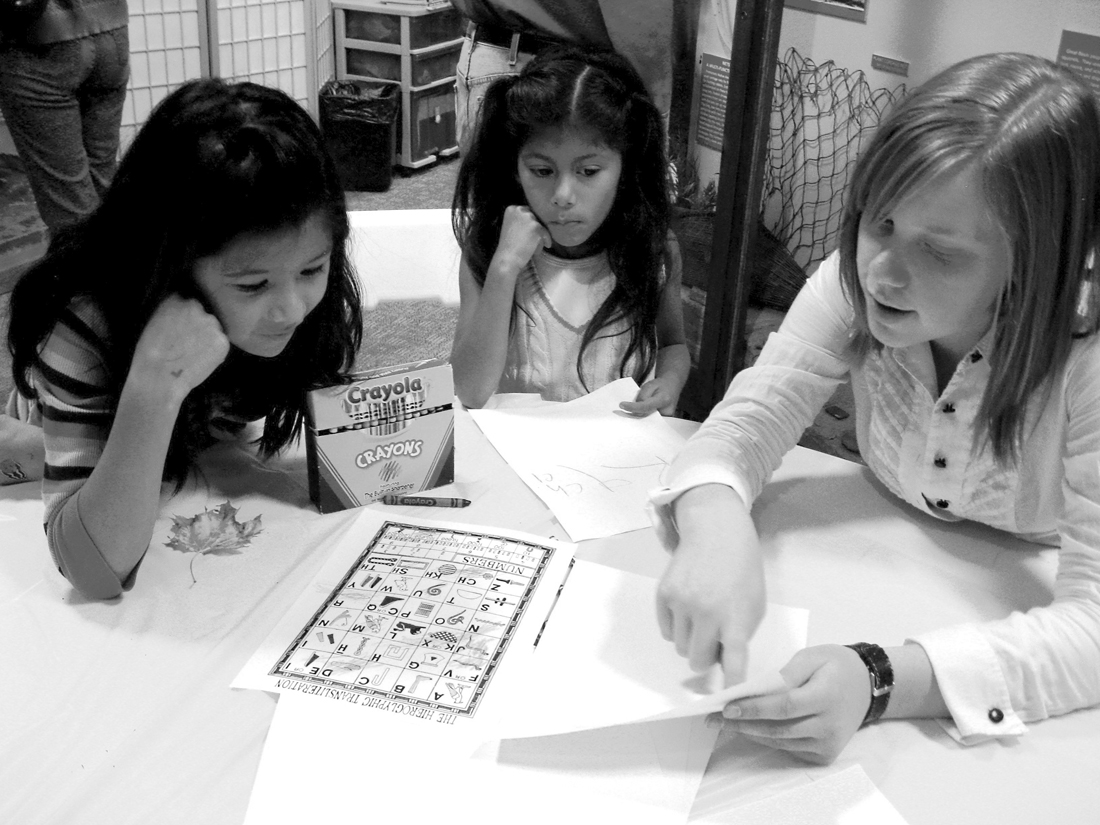Community learns about Egyptian afterlife
Not only have Egyptian mummies been gold mines for anthropological research in past centuries, they were used in Chinese medicine and as fuel for trains in the Transcontinental Railroad, said David Lancy, a professor in the sociology, social work and anthropology department.
“It’s pretty sacrilegious when you think about it,” Lancy said to laughter from his audience at the Museum of Anthropology.
During the most recent Saturday at the Museum program, Lancy presented a variety of information on the beliefs and rituals of Egyptian afterlife. Many families, students and residents from all areas of Cache Valley came to view the replicas of Egyptian artifacts in the museum and partake in the craft activities that were available.
Lancy, a recipient of the USU Humanist Award, has done extensive research on ancient Egyptian culture and traveled to Egypt to explore tombs open to the public. He said there are so many tombs open for public viewing in Egypt that it would take months to see all of them. Many of the areas in Egypt are “thick” with tombs that have still not yet been discovered, he said.
“There is an incredibly long history of sets of cultural practices related to the afterlife that stretch 4,000 years back, if not further,” Lancy said.
Lancy focused on the mummification and burial methods of Egyptians, though all cultures deal with afterlife in a distinct way. He said anthropologists and archaeologists believe the ancient Egyptians began mummifying after observing the great preservation of their ancestors who were buried in desert cemeteries beneath the sand. The salt in the sand and the dry climate was an ideal condition to preserve the bodies. The problem was that over time wind blew the sand from the burial sites revealing the corpses, Lancy said.
Egyptians began building immaculate tombs to bury significant figures in their society. Many were built directly into rock; tombs made from mud brick began to disintegrate over time, he said. Within these tombs ,constructed by servants, there were engraved or painted murals on the walls, representing the occupant of the tomb as well as their judgment before the gods and afterlife. The rooms were piled high with furniture, food, clothing and pets. Some servants sacrificed themselves to remain in the tomb with the deceased so they would have company, Lancy said. He said the Egyptians believed all of these things would pass over into the next life with them.
“It’s pretty evident that they found the afterlife significant,” Lancy said. “They invested their wealth and their time into their tombs more so than their living spaces.”
Often, Egyptian rulers would die before their tombs were complete, so a fraction were left unfinished. Tombs were not only constructed for rulers, Lancy said, but some workers who built these tombs were wealthy enough to have their own.
Many families with young children attended the event, and the Museum of Anthropology staff advertised to schools around Cache Valley hoping to pique students’ interest in learning about Egyptian afterlife.
“I think it’s a great way to get young children involved in learning and developing a love of exploring the world around them,” said Liz Gabbitas, a theatre major and employee of the anthropology museum. “We want to teach them something worthwhile that will make them want to come back again.”
Gabbitas also said these activities that cater to people of all ages are a great way for the community to benefit from USU’s knowledgeable professors.
Two tables were set up to entertain children who attended. They had the opportunity to make gold bracelets with their names painted on in hieroglyphics or they could color the hieroglyphics alphabet. There was also a demonstration in which apples were mummified. Museum employees showed how salt was used to dry out corpses, or in this case, fruit.
“I didn’t know they took the lungs out of the dead body and put it in a box and wrapped it up,” said 10-year-old Joanna Nelson. “My mom told me what the museum was about today and I just got really excited about it.”
Monique Pomerleau, curator for the Museum of Anthropology, said the museum’s staff worked side by side with Lancy to provide information concerning ancient Egypt in the exhibits.
– catherine.meidell@aggiemail.usu.edu

